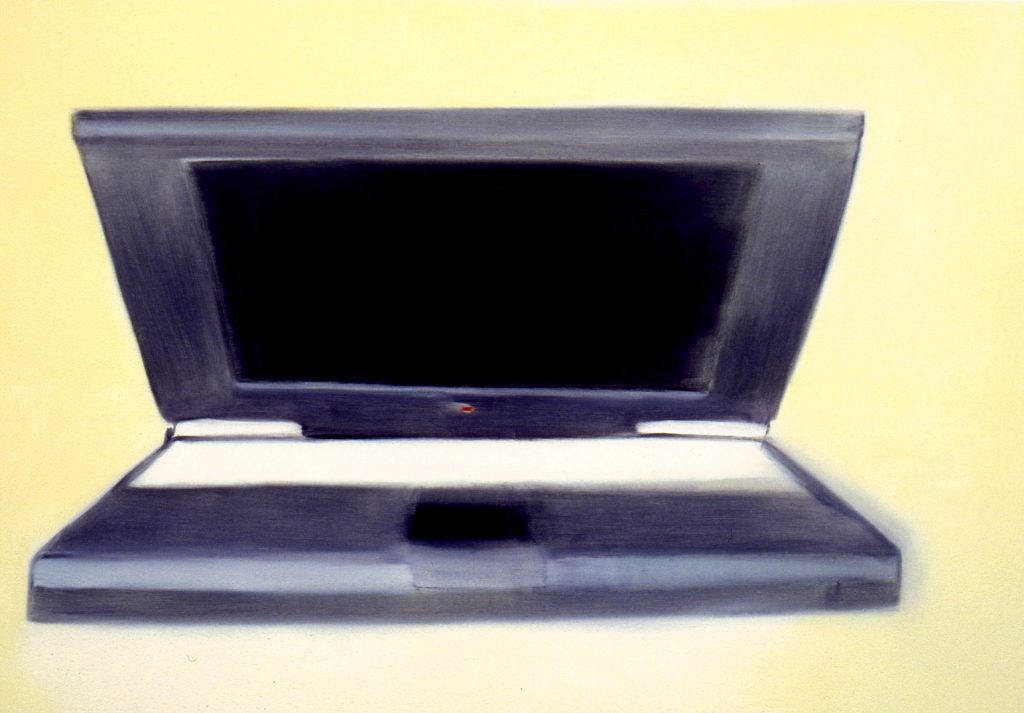FRONTRUNNER Meets Filmmaker Milorad Krstic
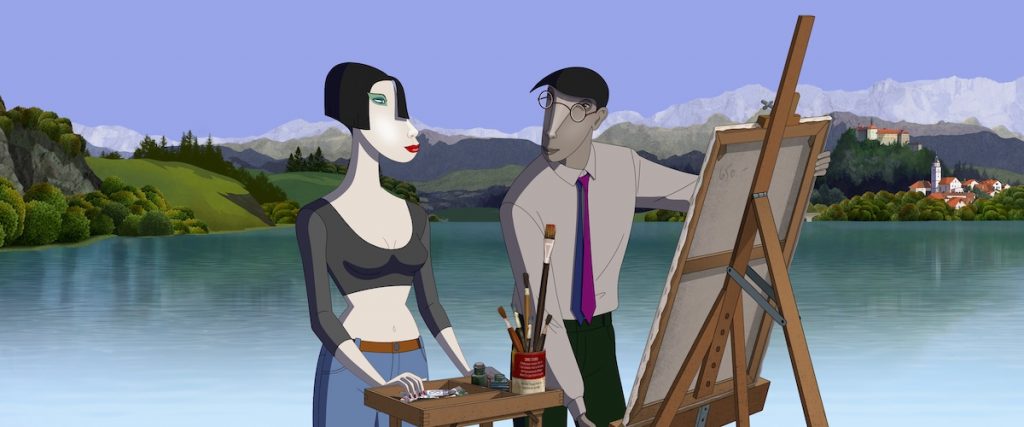
Name an art form, and Milorad Krstic will have studied and mastered it. He is a Slovenian painter, film director, visual artist, sculptor, author, illustrator, and also someone who (unfortunately too rarely) surprises his audience with films that are a feast for our senses and a ticket to art galleries around the world.
Having won the Silver Bear Award at the Berlinale in 1995 for his animated short My Baby Left Me, his latest film Ruben Brandt, Collector is Krstic’s first feature-length animated film that gained him worldwide recognition. The story follows Ruben Brandt, a psychotherapist haunted by thirteen unusual demons in his dreams. He is reckless in curing his pain, and that’s when his unethical choices invite the audience to follow his fate.
FRONTRUNNER spoke to Krstic about making Ruben Brandt, Collector, nightmares, psychotherapy, obsessions, and the power of art in our lives.
How does your art influence your filmmaking?
I’ve been painting all my life and my graphic style is essential in every scene of my films. I can’t stand cliché in my artwork, so I can’t stand it in my movie either. Every face, a passerby, a dog, cat, car, airplane, or piano must be peculiar, unique, original – not a cliché. The scenes must be well balanced like a perfect renaissance oil painting; whether it’s a portrait, still life, genre painting, or landscape. The original graphic design of Ruben Brandt, Collector should be its trademark. On the other hand my love for art, forced me to make this film about art. I slalomed through fine art history, just in the form of a psycho-action-thriller, because I have no interest in educating the audience through a documentary or art-house film about the art (Although some people take it as an art-house movie). I preferred to make a crime film about art. Robbing art museums is more exciting than just visiting them.
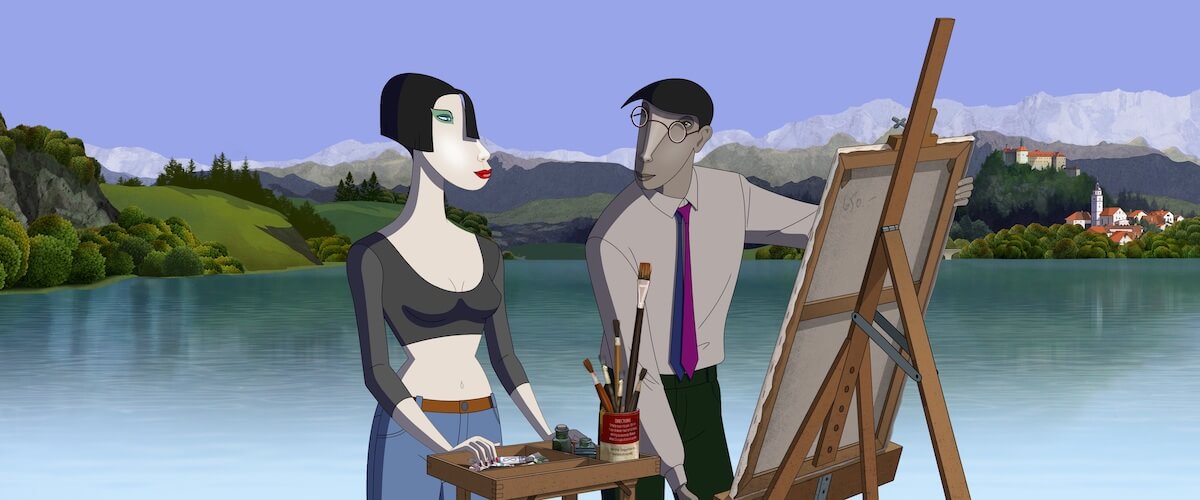
You won the Silver Bear Award at the Berlin International Film Festival in 1995 for your short, My Baby Left Me. 23 years passed until you made Ruben Brandt, Collector, your first feature-length film. What made you return to filmmaking and what kept you busy in-between?
I enjoyed painting, drawing, making sculptures, stage design for the opening of Hungary’s new national theater, and for Csaba Horváth’s Forte Company, comics for adults and children, making an illustrated book and an interactive animation CD-Rom of the 20th Century, a photo album and a documentary film about Budapest, and I also wrote screenplays such as Undo (2001), Motel (2000) and The Adventures of Liam Grant (2004). In September 2010, I made several drawings, which to me looked like scenes from an animated gangster movie. I continued to make drawings in the same style. I drew the scenes I wanted to have in my imaginary movie without a logical story order. I gave them fictitious titles such as “Scene 164”. “Kowalski on the road to Milan, Italy.” They are still on my blog: http://miloradkrstic.blogspot.com/search/label/Ruben%20Brandt%20scene
Later I said to myself: let’s make a logical story out of these drawings and turn it into an animated feature film about a serial robber of the famous art museums of the world. The robber steals the paintings, not because of their value, but because the characters from the paintings haunt him, they attack him in his nightmares. I the basis for a complex story of art, psychology, and crime. Then I wrote the script, consulting with my wife Radmila.
Who is Ruben Brandt?
Ruben Brandt is a famous psychotherapist, forced to steal thirteen paintings from the world’s famous museums to prevent his suffering from terrible nightmares as a result of subliminal messaging he received as a child from his father. He strikes regularly and with great success: the Louvre, Tate, [the] Uffizi, Hermitage, MoMA…The media calls him “The Collector” and quickly he becomes the most wanted criminal in the world. Police, gangsters, and headhunters chase him across the globe while the reward for his capture keeps rising, approaching a hundred million dollars. His name is a combination of painters Rubens and Rembrandt.
What was your process of creating the film? Did you build it around characters, art, perhaps the music, or you already had a set story in mind?
After creating the drawings, I put an animated storyboard in real-time, an hour and a half, as an audio-visual symphony. We recorded dialogues by ourselves, before working with professional actors. The sound and the music were as important as the graphics and animation.
I made an eclectic soundtrack; I used the music of the talented Tibor Cári, Mozart, Haydn, Schubert, Puccini, Stravinsky, and other classics, along with modern compositions. I started the film with “Pacific 231” by Arthur Honegger, then with a twist, “Do You Love Me?” by Brian Poole & The Tremeloes. The movie’s music slaloms through the 19th and 20th centuries. Scott Bradlee’s “Postmodern Jukebox” with the voice of Haley Reinhart was excellent for the bar sequences. “Li’l Red Riding Hood” by Sam The Sham & The Pharaohs was a fantastic introduction to an art psychotherapy lesson. “Le Sacre Du Printemps” by Stravinsky (performed by Ágens) was the right atmosphere for a surprising scene with Botticelli’s “The Birth of Venus”. The folk song “Kis Kece Lanyom” is a traditional Hungarian song, now performed by Richard Bona, Ferenc Snétberger, and Paolo Vinaccia was the perfect mood setter after a nightmare sequence. “Ursonate” written by Kurt Schwitters and performed by Bernd Rauschenbach was a magnificent end for the final Tokyo exhibition fight. Ludovico Einaudi’s “Nightbook” goes superbly with the train wheels’ rhythm at the end of the movie. They are well-known melodies, and I think this eclectic soundtrack gives a charm to the movie. I used to say an animated movie stands on seven legs: story, graphics, animation, music, sound, editing, and camera movement.
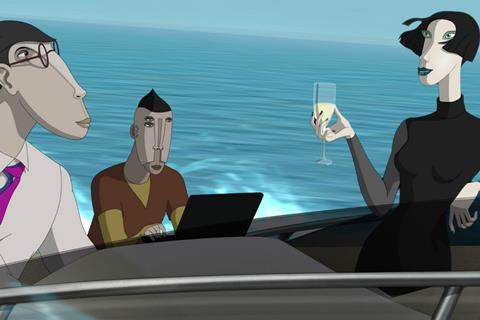
How long did it take you to produce, find a team and what tools and support did you need to achieve this quality?
It was a six year-long trip on a sailboat over the ocean. I was the captain of the ship and I knew the most important thing, if we want to cross the ocean, I need teamwork. All crew-members were important – from the navigator to cabin boy. I was ready to listen to everyone’s opinions and impressions of each scene in the film. Once a month, we showcased the 1.5-hour animation with just a sketch in a second instead of 24, with sound and temporary dialogue, just to see how it works, how to edit, and improve the whole rhythm of the animation. We created the final dialogue in English. I’m thankful to Olen Steinhauer, a New York Times best-selling author, for supervising the dialogue. But the most important thing is money. Without enough money, you can’t get talented 2D and 3D animators, and experts who are capable of making a high-quality animation in 4K resolution. Plus, we had to pay for copyrights for music and paintings of the 20th Century.
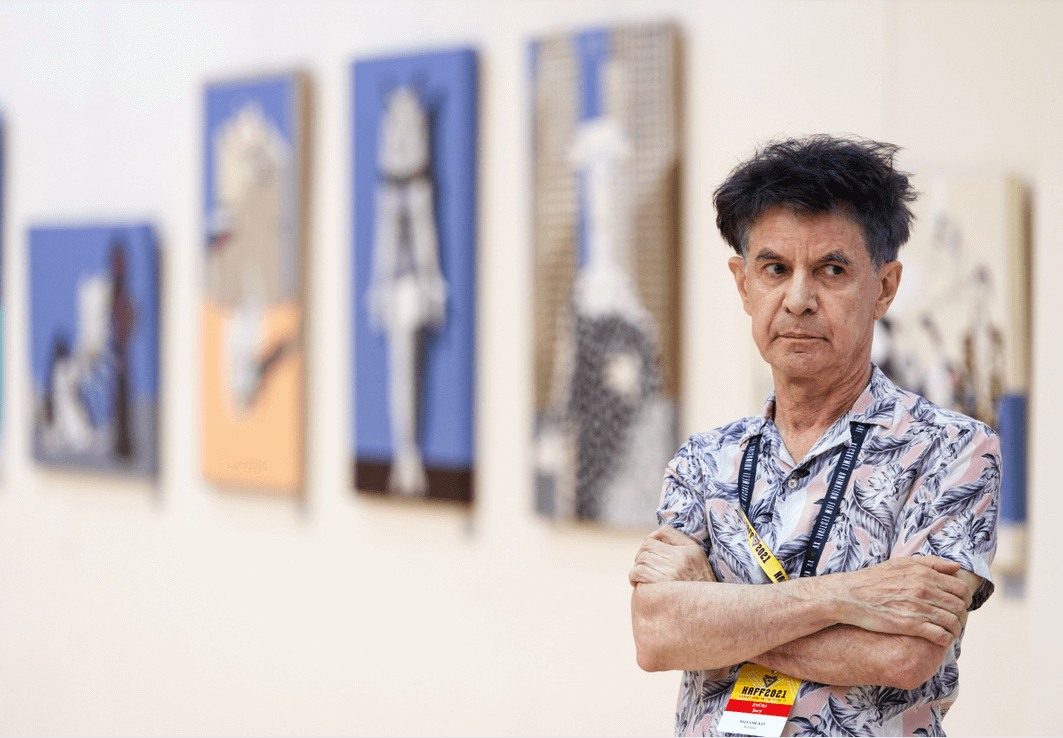
Mental illness, obsession, “addiction” and nightmares are recurring themes. They eventually become one’s enemies and perhaps drive people to do things they wouldn’t normally do. You introduced the audience to art through these themes. Why? And what relevance would you say these themes have to art?
I wanted to talk about art, from a different perspective. Enjoying art is a normal situation, but being haunted by art looks more interesting to me. I didn’t want to use horrible creatures from paintings of Hieronymus Bosch or Francisco Goya to haunt Ruben. It would be a cliché. I don’t like zombies in horror scenes. I wanted the opposite: Ruben must be haunted by nice people like “Venus” by Botticelli or by a little girl, “Infanta Margarita”, by Velázquéz, or seductive Olympia by Manet. Otherwise, mental illness, obsession, “addiction” and nightmares go very well with art; from Phobetor, the God of Nightmares in Greek mythology, to David Lynch.
What are your nightmares?
I don’t have nightmares, but I had unpleasant dreams. A fast train passing in front of my face, but I can’t step back because there is a wall behind me. Or ugly strangers pretending to know me and entering my room, soon the room is full of those ugly people. This second example could be a real nightmare.
Brandt is a psychotherapist with patients, but the audience learns that in reality, he is the one who needs therapy. Would you agree or disagree that it’s an expectation that artists deal with mental illness or depression?
I agree. Talented artists are hypersensitive, and that’s why they can’t keep both feet firmly on the ground all the time. An average person can. That’s why talented artists are more emotionally vulnerable than the average person. Mental illness or depression could be the high price they should pay for their excellence.
Your art comes alive in the film, but the story’s main character Ruben Brandt longs for other artists’ work. Has it got anything to do with you glorifying/idolizing other artists’ work and what effect do these paintings have on you?
For me, these famous painters were my teachers. I didn’t go to art school (I have a degree in Law), but I was lucky. Michelangelo taught me about the human anatomy: I learned that a foot looks more elegant when the second toe is longer than the first toe. Caravaggio taught me how to use shadows and light to make drama in an empty cellar. From Goya, I learned to make disturbing and horrifying scenes with or without blood. From Rembrandt, I learned to put the mystery into the man portraits. From Kandinsky, I learned to enjoy in colored forms without describing objective nature. From Van Gogh and Munch, I learned to make a disturbing atmosphere with colors and shadows. Otto Dix taught me to make a provocative drawing with gallows humor. De Chirico taught me to use different perspectives in the same painting. Picasso showed me how to watch the same thing from different angles simultaneously. The art, from the Lascaux Caves to Andy Warhol, influenced my work.
The film is an art lexicon. Was it a conscious decision to educate your audience and to widen their perspectives or the references in the film are a reflection of simply what inspires you and a way of expressing your creativity?
No, I didn’t want to educate the audience. I enjoyed my slalom through the art and cinema because those two fields are my favorite. I can give you an example of how some scenes inspired me. Watching film noirs, I discovered a scene in a movie by Anatole Litvak, Goodbye Again (Do you like Brahms?) (1961). Yves Montand is in the car, he turns the interior mirror in an almost vertical position, to see the whole body of the girl on the sidewalk. I was mesmerized with this choreography and I decided to put it in my movie. During the car chase, Boris turns the interior mirror in the vertical position, to see Kowalski entering the car behind Boris. It was my homage to a film with Ingrid Bergman, Anthony Perkins, and Yves Montand. I hardly believe that somebody will recognize my replica of Yves Montand’s gesture, but I hope there will be people in the future who will. I’m sure they will enjoy it.
Another example; during the Paris chase in Ruben Brandt, we can see a concierge, with a broom, standing on the stairs, near the elevator. Her huge shadow is on the wall. It is my comic homage to Eisenstein’s film Ivan the Terrible (1944), when the Tsar, holding the scepter, stands on the stairs. Another scene inspiring the film was with a dog with a human hand in his mouth. It is a scene from Kurosawa’s film Yojimbo (1961). David Lynch made a similar dog scene in Wild at Heart (1990). As my homage to both directors, I made a little cardboard dog with a human hand in his mouth and put it in the car of the killer Barutanski. There are similar movie references in Ruben Brandt and even more in the famous paintings.
The film addresses people’s different interests and approaches to art let that be a monetary value, satisfaction, adrenaline, or obsession. What is the value of art for you?
To explain the value of art (as a painter), we have to go back to the beginning of fine art. First paintings were made 40,000 years ago on the walls or ceilings of caves. They were two-dimensional images of a three-dimensional world: bison, horses, and hunters. In the 21st Century, we still have two-dimensional paintings in modern art galleries and our homes. The question is: why did two-dimensional art survive 40,000 years and remain vital in today’s world of computer-generated 3D images? What is in two-dimensional paintings that are still attractive to people? My answer is: a two-year-old can recognize a pencil sketch of a rabbit as a rabbit. The simple sketch can activate the child’s brain to see the real rabbit. In the same way, an artwork stimulates observers to recognize the message sent to them by the author. If the message is original, never seen before, observers will enjoy seeing a well-known world from another perspective. They will say: yes, I recognize the content, but the form is new and fresh. Sure, there are observers, who prefer traditional paintings, and they will say: I don’t understand it; it doesn’t look like real nature, and I don’t like it. But an artist’s task is to not follow the traditional taste; she/he must follow her/his impulses. That’s the real value of art for me, to show the real world in your unique and fresh way because the essence of art is not to repeat this world but to discover it. If I succeed in doing it in my paintings and drawings, I’m satisfied. Ralph Emerson once said, “The reward of a thing well done is having done it.”
What guidance would you give for those who are thinking about working in animation or switching to animation?
First make a short animation and then a feature film! Good luck!
What is the future holding for you? Will you be making any more films?
MILORAD KRSTIC: I have finished my new paintings and drawings for an exhibition in Collegium Hungaricum in Berlin. And I’m working on a new feature animated film for kids.





